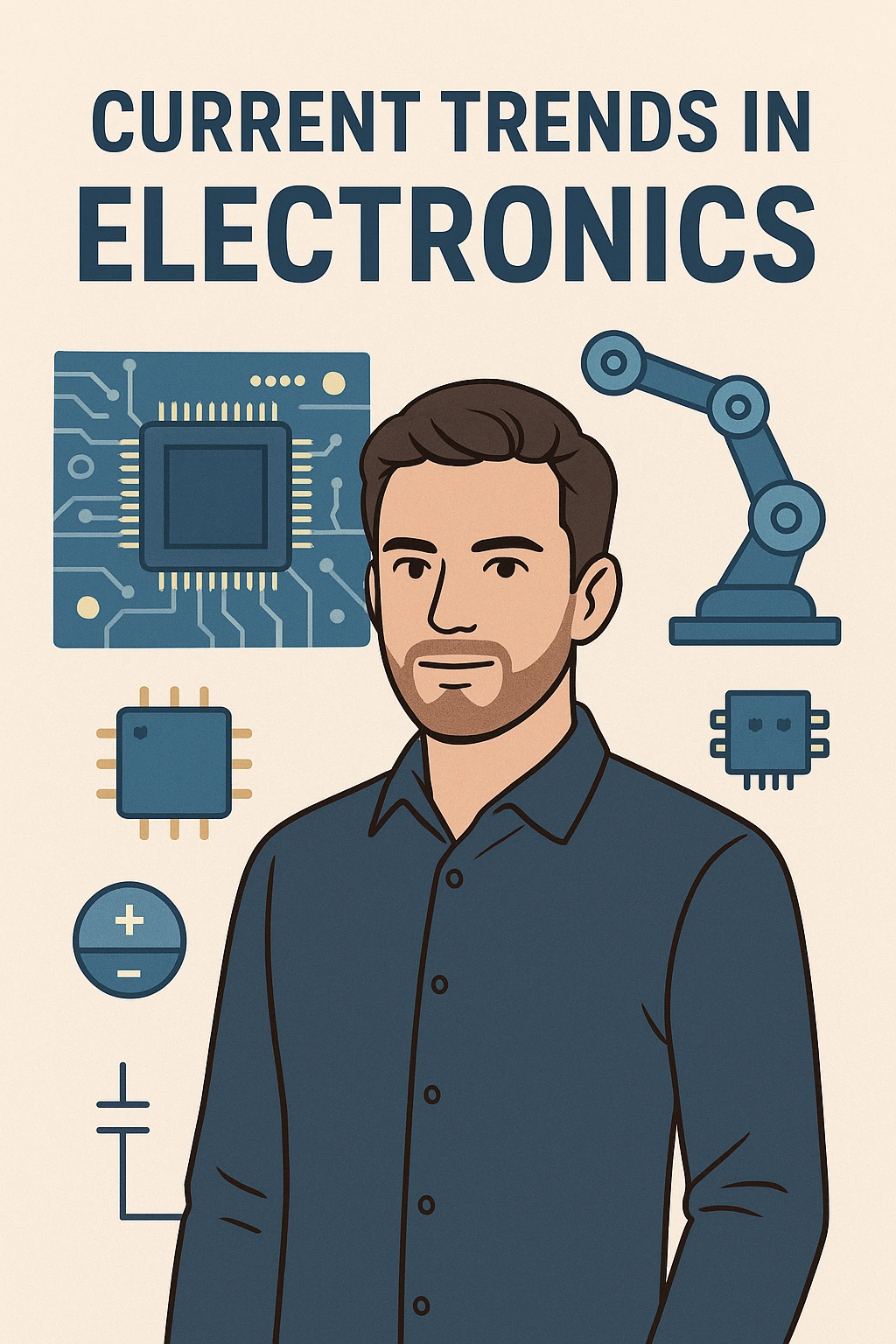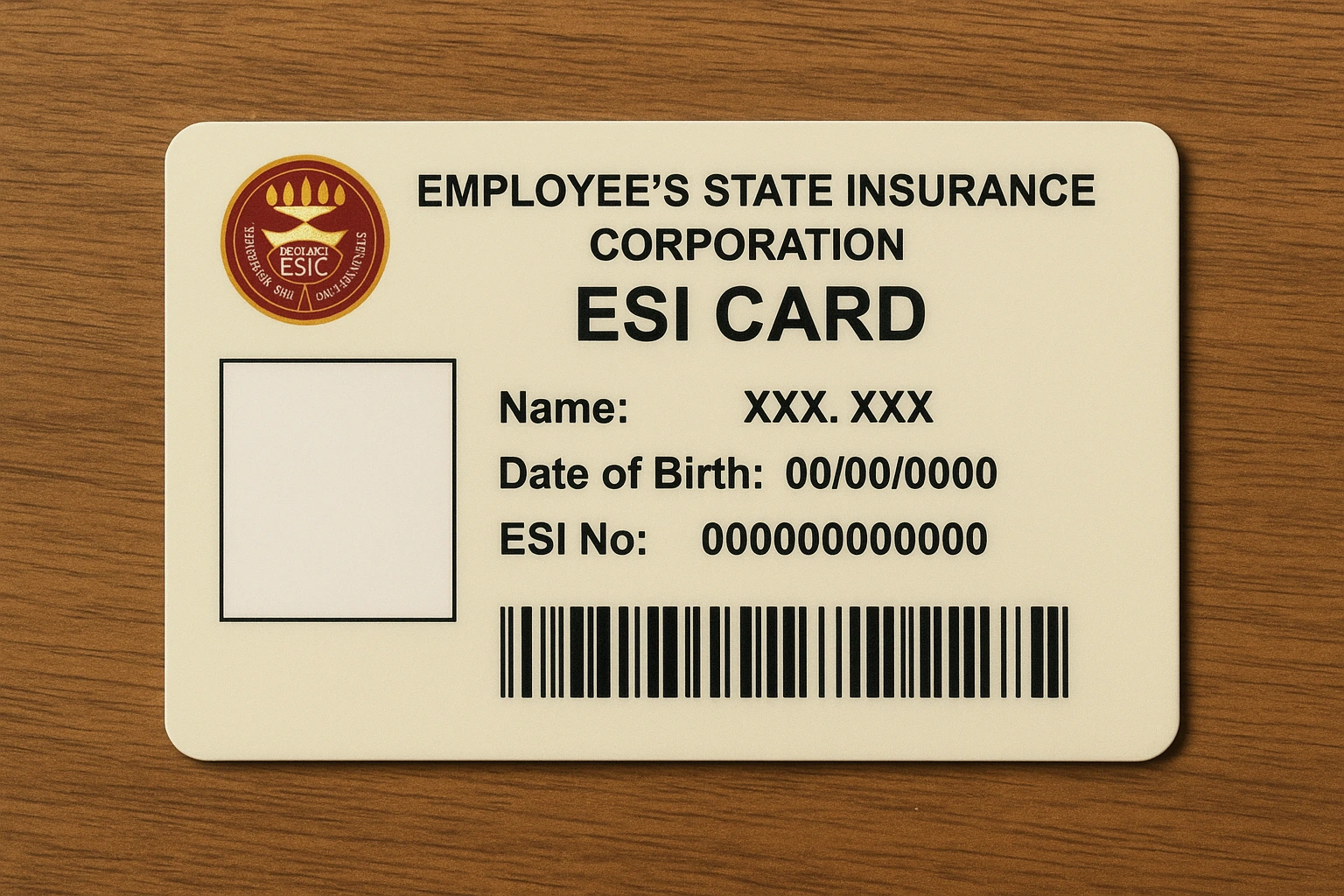Current Trends in Electronics Latest Updates

Explore current trends in electronics, featuring the newest devices and technologies shaping the industry. Stay updated and enhance your tech knowledge today.
🤖 The AI Revolution is Here: Electronics Trends Driven by Predictive Intelligence and Sustainability (Current Trends in Electronics)
NOV 16, 2025 – The consumer electronics landscape is undergoing a dramatic transformation. It is moving beyond simple connectivity. These devices are more intuitive and energy-efficient. They are also deeply integrated into daily life.
Also, read Bihar Election 2025: NDA Delivers a ‘200-Paar’ Mandate
The latest trends show a clear convergence of Artificial Intelligence (AI). They also highlight the integration of the Internet of Things (IoT) and a new focus on sustainability. All these are powered by advancements in the semiconductor industry.
Current Trends in Electronics: Smarter Homes Get Predictive with AI 🏡
The “smart home” is evolving from a collection of connected devices to a truly predictive ecosystem. AI is now the invisible brain, learning user habits to automate and improve the home environment without constant manual involvement.
- Predictive Automation: AI-powered systems predict needs. They adjust smart thermostats before you get home. They set personalized lighting scenes. They even alert you to potential maintenance issues in appliances before they fail.
- Universal Interoperability: New standards, like the Matter protocol, are finally ensuring compatibility across devices. Brands like Apple, Google, and Amazon can now communicate seamlessly. This simplifies setup and creates genuinely unified control.
- Green Tech Focus: Sustainability is a key driver. Expect to see more devices integrating with solar and battery storage systems for energy independence. These devices will offer homeowners with real-time dashboards. Homeowners can check and improve their energy usage. This helps reduce both utility costs and carbon footprints.
The New Silicon Era: Microchips Power the Future 💡 (Current Trends in Electronics)
Behind the scenes, the semiconductor industry is pushing the boundaries of what is possible. They are doing this largely to meet the immense computing demands of Generative AI. This is leading to smaller, faster, and more specialized chips.
- Beyond Miniaturization: As traditional scaling reaches its physical limits, innovation is shifting toward new approaches. 3D-packaging and ‘chiplets’ are becoming mainstream. They allow manufacturers to stack and integrate diverse components. This leads to more power-efficient and high-performing chips. These advancements are essential for next-generation AI accelerators.
- Custom Silicon Surge: There’s a growing trend toward Application-Specific Integrated Circuits (ASICs) and custom chips. Major players across various industries are taking action. Companies from automotive to telecom are designing their own specialized silicon. They aim to meet the unique latency and power requirements of their high-intensity AI workloads.
- Sustainable Manufacturing: Manufacturers are prioritizing greener production. They are adopting processes like AI-powered predictive maintenance. Digital twins are also being utilized. These technologies boost efficiency and reduce waste in the complex fabrication process.
Consumer Gadgets: Performance and Personalized Experiences 📱 (Current Trends in Electronics)
For consumers, the latest gadgets offer enhanced performance. They introduce new form factors. These gadgets also give deeper personalization, especially in mobile and computing.
- Laptops and Hybrid Work: The demand for powerful, portable laptops and notebooks remains high. This demand is driven by the continued shift to remote and hybrid work models. Innovations focus on lightweight designs and extended battery life. They also offer processing capabilities that handle intensive tasks like gaming and creative production on the go.
- Foldables and Wearables: Expect to see continued iteration on foldable phones and a push for more advanced wearable technology. Devices like smartwatches and rings are integrating more comprehensive health and wellness features. They offer detailed, real-time physiological data. They also act as key control points for the new, intuitive smart home.
These trends collectively show an electronics future. In this future, devices don’t just follow commands. They actively learn, predict, and manage our environments for greater efficiency and personalization.
Also, read Cultivating Creativity: Creating a Culture of Innovation
🔒 Feature Focus: AI Takes Smart Home Security from Reactive to Predictive (Current Trends in Electronics)
The biggest shift in home security is moving beyond simple motion detection and alarms. AI and Machine Learning (ML) are transforming smart home systems into intelligent, proactive guardians.
Current Trends in Electronics: Intelligent Detection and Contextual Alerts
AI eliminates the most common issue in traditional security: false alarms.
- Person vs. Object Differentiation: AI-powered cameras use computer vision to distinguish between pets, vehicles, falling leaves, and actual human intruders. This dramatically reduces the number of unnecessary alerts you get.
- Facial and Behavioral Recognition: Systems learn the faces of residents and regular visitors. They also track normal behavioral patterns (e.g., when the front door usually opens, when movement occurs in certain rooms). An alert is triggered only when something truly unusual or unrecognized occurs—a form of predictive risk assessment.
- Advanced Biometrics: Smart locks are integrating more robust AI-enhanced biometric authentication. This includes technologies like fingerprint and facial scanning. These technologies offer high-security access control and are much faster than traditional keys.
Current Trends in Electronics: Automated and Integrated Responses
When a threat is detected, the AI system doesn’t just send a notification; it initiates a coordinated, multi-device response.
- Automated Deterrence: If an unrecognized person lingers at the front door, the AI can automatically turn on floodlights. It can also sound a specific siren. Alternatively, it may trigger a pre-recorded voice warning.
- Scene Integration: An intrusion alert can trigger an entire “lockdown” scene. Doors lock, certain lights flash, and internal cameras start high-definition recording. All this happens without manual control.
- Real-Time Context: Notifications are context-aware, including a video clip, a label (e.g., “Person detected at garage door at 2:15 AM”), and a timestamp, giving homeowners the information they need to act instantly.
📈 Technical Deep Dive: The Impact of 3D Chip Packaging (Current Trends in Electronics)
The rise of AI and high-performance mobile devices demands microchips that are far more powerful and compact than ever before. 3D Chip Packaging is the technology meeting this demand, allowing electronics to bypass the traditional physical limits of chip miniaturization.
Current Trends in Electronics: How 3D Stacking Works
Instead of spreading components side-by-side on a flat (2D) plane, 3D packaging stacks multiple functional chips vertically. These chips are called dies or chiplets. The chips are connected with tiny, high-speed vertical wires known as Through-Silicon Vias (TSVs).
Key Advantages for Consumer Electronics
This vertical architecture delivers four primary benefits that directly impact the performance and design of modern electronics:
- Miniaturization and Footprint Reduction: By stacking chips, manufacturers can fit more components into a much smaller physical space. This is critical for making slimmer smartphones, lighter wearables, and more compact IoT devices without sacrificing performance.
- Performance Boost: The short interconnects provided by TSVs drastically reduce the distance data must travel. This is between the processing unit and memory. This results in faster data transfer rates (higher bandwidth). It also leads to lower signal latency. These improvements are crucial for real-time AI processing and high-end gaming.
- Power Efficiency: Shorter wires mean less energy is wasted in data transmission. Devices using 3D stacked chips consume significantly less power for the same workload. This leads to extended battery life in mobile devices.
- Heterogeneous Integration: 3D stacking enables manufacturers to combine different types of chips. Examples include a cutting-edge processor, standard memory, and a specialized sensor chip. These are integrated into a single, unified package. This optimizes overall system performance. Each part can be manufactured using the best process for its role. This is done regardless of the others.
📰 QUICK TAKE: Electronics in the Age of AI and Green Tech
Here is a short, punchy summary combining the key themes for a trending news site.
AI-DRIVEN SECURITY AND THE STACKED CHIP REVOLUTION
The world of electronics is rapidly accelerating. Two powerful forces drive this acceleration: smarter security powered by AI and a miniaturization breakthrough in chip design.
Current Trends in Electronics: Your Home Just Got a New Brain 🧠
Smart home security is graduating from simple motion sensors to predictive intelligence. New AI-powered systems are leveraging advanced computer vision and behavioral recognition to remove false alarms and detect genuine threats.
- The Difference: This system learns your family’s routine and recognizes authorized faces. Instead of simply sending an alert, it starts a coordinated response automatically. This includes actions like flashing lights and locking doors. It turns your home into a truly proactive guardian.
Current Trends in Electronics: The Secret to Power and Portability: 3D Chips 🚀
Modern AI and complex mobile apps need handling an immense computational load. As a result, traditional chips are being replaced by 3D-stacked packaging.
- How it Works: Instead of spreading components flat, specialized chips (chiplets) are stacked vertically. They are connected by tiny internal highways, known as Through-Silicon Vias or TSVs.
- The Result: This technology provides faster data transfer. It drastically reduces power consumption, meaning longer battery life. It also allows manufacturers to fit high-performance hardware into slimmer, lighter devices like next-gen smartphones and advanced wearables.
Bottom Line: From the chips under the hood to the security guarding your front door, electronics are getting faster. They are becoming smaller and more efficient. Most importantly, they are far more intelligent.
Also, read Local Trending News: Latest Updates Now
Discover more from Trending News Fox
Subscribe to get the latest posts sent to your email.




